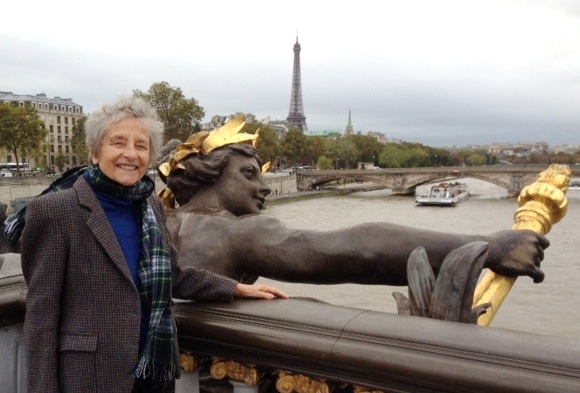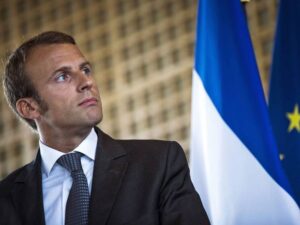
There have been many deadly pandemics in the history of the planet but this is the first time ever that one has affected so many people. COVID-19 forced half the world population – or more than three billion – into confinement. I guess this is the price one has to pay for living in a globalized world. Each country handled the coronavirus crisis in a different way.
How did Europe, and more particularly France, manage the virus outbreak, both during the stay-at-home period and after the relaxation of the rules?
Like many people, I escaped the approaching lockdown of large cities – in my case the French capital of Paris.

On March 16, I left Paris on what I thought would be an extended weekend but turned out to be eight weeks, and was fortunate enough to stay with my daughter in Fontainebleau. Only a 40-minute train ride south east from Paris, Fontainebleau is a lively town of 15,000 inhabitants, famous for its 12th century chateau restored and enlarged by generations of kings.
During the period of “confinement” – as the lockdown is called here – technology became quite helpful. People exchanged news and jokes across the globe, using WhatsApp; some did yoga or gym watching YouTube; meetings took place via Zoom; people on Skype remained safely behind the screen while they urged other to stay home, and a French actor read La Fontaine fables on Instagram. In other words globalization had not ended … it just had become virtual.
A feeling of anguish never went away. Week after week, one watched hospital scenes with medical staff and caregivers hovering over patients disappearing under respirators, ventilators, machines of all types connected by wires and tubes. We, the spectators, became numbed by so much suffering.
Every night the head of the health department gave frightening, sometime confusing information. On TV all we saw were doctors, surgeons, epidemiologists, and doctors specialized in intensive care. Politics, economy, even social conflicts had been moved to the back burner.
In France, late March was the most frightening time. We were at the bottom of the curve showing an acceleration of the virus and feared a tsunami . It was on March 23 that the stock market fell to the lowest point, losing 40 percent from its high. The world was collapsing around us.
I attempted to read “The Plague” by Albert Camus, published in 1947. Bad idea! The description of the ghastly symptoms and of the panicked Oran population became unbearable. The story resonated too much with what we were going through.
The epidemic in France started in the Grand Est. A group of 2000 evangelists had gathered for a week of fasting in Mulhouse. The area became the epicenter of the outbreak. Very soon it was joined by the heavily-populated Ile de France with Paris at its center.
France has been one of the countries hardest hit by the virus. Actually it ranks as fifth for the number of deaths, after the US, Russia, Italy and the UK.
The objective of the French government was to make sure that the medical facilities would be able to absorb the sudden surge of infected people. Chaos was avoided thanks to planning ahead. At the height of the crisis, transfers of patients were organized to areas less affected by the virus, and to other countries like Germany or Switzerland. Helicopters, fast trains, military planes, boats … all means of transports went into action.

The Macron government showed compassion during this difficult time, expressed gratitude toward the caregivers, and showed humility in its limited ability to cope with such an unprecedented situation. In other words it appeared human … while also gaining a few points in the polls.
The government took unparalleled measures compared to most other countries. It gave temporary unemployment status – with up to 90 percent of a person’s salary covered – to one out of three wage earners – or 13 million people. Some taxes were cancelled, and bonuses distributed. The total of this largesse reached 120 billion Euros. The Maestrich Treaty rule of capping European Union (EU) members’ deficit at 3 percent is now forgotten. The French national debt, usually limited to 60 percent of the Gross Domestic Product, doubled.
The management of the coronavirus crisis did not go without a number of hiccups however. The main one was the shortage of masks. It has been a source of irritation throughout. On the advice of medical experts, the government kept saying that the masks were useless except when used in public places. It stressed that priority should be given to the medical staff who are battling the disease on the front line.
The real reason for this policy soon exploded into a scandal; in reality, there were not enough masks. Frantic orders were placed in other countries, mainly China. At one point, one witnessed a real war of the masks. Some shipments were burglarized, other rerouted. One shipment intended for Italy was confiscated on its arrival at Prague airport and, in another case, France took over a shipment on its way to Sweden. On the eve of the “deconfinement” masks were still hard to find.
Another criticism of the crisis management has been the insufficient number of testing facilities.
One does not want to be old at a time of pandemic because statistics do indeed show that older people are most vulnerable to the disease. At one point, a rumor started that “our fragile seniors” should remain locked up long after the rest of the population.
Fortunately for all the older people, Bernard Pivot, a most popular and entertaining moderator of a literary show on TV, rebelled one day. He was so funny and convincing that the government changed its policy and replaced age discrimination by health criteria.
It is a fact though that real carnage has taken place in nursing homes and retirement homes with assisted-living.
The stay-at-home rules were quite strict in France. Public gardens and forests (like the forest of Fontainebleau) were off-limit. Only a one-hour walk was allowed and no further than one kilometre from the person’s residence. A signed document and ID were required at all times. Dispensation was only granted for the imperative need to purchase food or medicine.
By mid-April, one began to see the light at the end of the tunnel when Macron gave May 11 as the date for the end of our, “deconfinement.”
The gradual opening up of society after that date was a cautious, arduous and very gradual process. Prime Minister Edouard Philippe and his key ministers spelled out the rules in a 60-page Protocol. A map showed France divided between red and green zones. The hardest task was to organize public transport in heavily populated areas as well as re-opening of the schools. Today there is a limit of 60 miles for travel from one’s residence. Cafés and restaurants remain closed in the red zones.
On June 3, the government will reassess the impact of loosening the rules. About 30 small “clusters” of contamination are popping out around France. Several of them are where people work in in slaughter-houses. But nothing to worry about (as yet).
At the outset of the COVID-19, France was just pulling out of months of strikes and social turmoil following the government’s structural reforms intended to modernize the country. The crucial retirement system was being debated in the Parliament. Overall, progress had been made under the Macron mandate: the economy was sound and unemployment at its lowest levels in years.
Then progress and turmoil came to a full stop almost overnight because of the pandemic.
Culture felt the brunt of the crisis. Cinemas, theaters, opera houses, concert halls, museums and festivals will stay closed until June. The cancellation of the Cannes Festival was the worst blow.
Europe has been slow in tackling the coronavirus. Ursula von der Leyden , president of the European Commission acknowledged that fact herself. A gigantic stimulus is being negotiated by the EU members. Thierry Breton, European Minister of Internal Trade said, “Only solidarity can help the EU get back on its feet.”
But the “North countries” like The Netherlands and some Eastern European countries, including Hungary, are balking at the idea of helping those hardest hit by the virus. On May 19, an accord between Macron and Germany’s Angela Merkel was a real breakthrough with a proposal to create a bond of 500 billion to help the EU recovery. The 27 members have still to agree to it.
How did the French accept the lockdown? Surprisingly well … at least at first. But as the anxiety diminished, the opposition found its voice again, public opinion resumed its usual pastime of scrutinizing and criticizing every move by the government.
Bruno Lemaire, the French Minister of the Economy declared, “The hard part is ahead of us.” The main priority will be to assist three sectors: aeronautics, the car industry and tourism. It is a unique opportunity to redirect the economy to be carbon-free.
But the future looks like a black hole with the economy under perfusion.
Let’s end with good news though. Beaches have reopened and travel restrictions are set to disappear in July and August … just in time for vacation!
Editor’s Note: This is the opinion of Nicole Prévost Logan.

About the author: Nicole Prévost Logan divides her time between Essex and Paris, spending summers in the former and winters in the latter. She writes a regular column for us from her Paris home where her topics will include politics, economy, social unrest — mostly in France — but also in other European countries. She also covers a variety of art exhibits and the performing arts in Europe. Logan is the author of ‘Forever on the Road: A Franco-American Family’s Thirty Years in the Foreign Service,’ an autobiography of her life as the wife of an overseas diplomat, who lived in 10 foreign countries on three continents. Her experiences during her foreign service life included being in Lebanon when civil war erupted, excavating a medieval city in Moscow and spending a week under house arrest in Guinea.